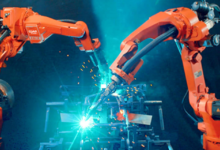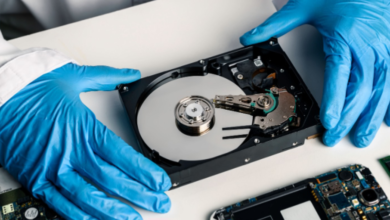What Are Suction Cups Used For? Understanding Their Function and Benefits

When it comes to what are suction cups used for, many people think of simple household tools, but their purpose extends far beyond that. Suction cups play a vital role in various industries, from manufacturing and robotics to packaging and medical applications. By creating a temporary vacuum seal, they allow objects to be lifted, held, or moved safely and efficiently without causing damage. In this article, we’ll explore how suction cups work, their different types, and the key benefits they bring to both everyday tasks and industrial automation.
How Suction Cups Work
Vacuum suction cups work by creating a pressure difference between the inside of the cup and the outside atmosphere. When the cup is pressed against a surface, it pushes out the air inside, creating a partial vacuum. The higher atmospheric pressure outside the cup then presses it firmly against the object, holding it in place. The holding force depends on the pressure difference (ΔP) and the contact area (A) of the cup:
AF=ΔP×A
For example, a 5 cm diameter cup with a pressure difference of 100,000 Pa can theoretically hold about 196 N, assuming an ideal vacuum and no air leaks.
Material and Surface Effects
- Suction cups are usually made of rubber, silicone, or similar flexible materials to create a tight seal on surfaces.
- They work best on smooth, non-porous surfaces like glass or polished metal. Rough, porous, or dirty surfaces reduce effectiveness.
Limitations
- Cannot work in a vacuum (no atmospheric pressure).
- Poor adhesion on wet, dirty, or textured surfaces.
- Extreme temperatures can affect the material’s flexibility and performance.
Understanding these principles helps ensure suction cups are used safely and efficiently in industrial, robotic, and commercial applications.
Types of Suction Cups
Vacuum suction cups are used in many industries to handle materials safely and efficiently. They come in a variety of shapes and types to meet different industry needs.
Manual Suction Cups
Manual suction cups are hand-operated, typically by pressing or using a lever to create a vacuum. They are lightweight, easy to use, and ideal for light-duty tasks.
Applications: Household use, small workshops, and portable operations.
Limitations: Not suitable for heavy loads or industrial-scale applications due to limited suction capacity.
See also: 7 Proven IBS Treatments to Restore Gut Health and Relieve Symptoms
Pneumatic Suction Cups
Pneumatic suction cups use a vacuum generator or pump to create stronger suction, making them suitable for industrial applications. They can handle heavier items like glass or metal sheets and offer greater reliability than manual cups.
Applications: Manufacturing, packaging, and automation industries.
Recommended Types:
Flat Suction Cups: Best for flat surfaces such as glass or metal.
Bellow Suction Cups: Adaptable to uneven or curved surfaces, providing flexibility.
Electric Suction Cups
Electric suction cups are integrated into automated systems, such as robots or forklifts, for heavy-duty, high-volume industrial tasks. They deliver consistent, powerful suction, improving efficiency and reducing manual labor.
Applications: Automotive assembly, logistics, and large-scale industrial operations.
Recommended Types:
Vacuum Lifters: For lifting heavy materials safely.
Vacuum Gripping Systems: For precise automated handling in production lines.
Specialized Suction Cups
Specialized suction cups are designed for specific materials or unique handling requirements, ensuring safety and optimal performance in critical applications.
Applications and Examples:
Glass Handling: Protects delicate glass surfaces without causing damage.
- Wood Handling: Grips porous wooden surfaces effectively.
- Sheet Metal Handling: Suitable for thin metal sheets in manufacturing.
CNC Machining: Provides stable, precise holding for CNC operations.
Industrial and Automation Applications
Suction cups are widely used in industrial and automated systems for safe, efficient, and precise material handling. They are essential wherever speed, accuracy, and minimal surface damage are important.
- Manufacturing and Assembly
Suction cups are used to pick, place, and position components. They are commonly found in automotive, electronics, and consumer goods production, helping improve precision and efficiency in assembly processes.
- Packaging and Logistics
Suction cups are used to lift and move boxes, bottles, trays, and other packaging items. They are commonly integrated into automated systems for filling, sealing, labeling, palletizing, and order picking, improving speed in packaging operations.
- Glass and Metal Handling
Suction cups can safely lift and move large, flat, or delicate surfaces without scratching or bending them. They are commonly used in construction, glass fabrication, and sheet metal processing.
- Electronics and Semiconductor Industry
Suction cups are used to safely handle small, delicate components such as wafers, chips, and displays. They help prevent contamination and ensure precise placement during assembly.
- Automated Robotics
Suction cups are used on robotic arms and automated systems to handle objects quickly. They reduce manual labor, increase efficiency, and maintain consistent performance.
Suction cups enhance precision, safety, and efficiency, making them essential in modern industrial and automation processes.
Key Benefits of Suction Cups
- Non-Damaging Handling: Suction cups lift and move objects without using clamps or mechanical fingers, minimizing the risk of scratches, dents, or other surface damage.
- High Precision and Accuracy: Suction cups allow materials to be positioned exactly where needed, which is essential for manufacturing, assembly, and packaging tasks.
- Versatility: Suction cups can hold many types of materials on different surfaces, making them useful for a variety of tasks in manufacturing, packaging, robotics, and other industries.
- Efficiency and Speed: Suction cups are ideal for automated systems, allowing quick, repetitive pick-and-place actions. This not only speeds up production but also reduces downtime and labor costs, making operations more efficient overall.
- Safety and Ergonomics: Suction cups reduce the need for manual lifting, lessening physical strain on workers and minimizing the risk of injuries. This makes workplaces safer and more comfortable, especially in high-volume or repetitive handling tasks.
- Cost and Maintenance Savings: Suction cups often feature modular designs, so only worn parts need replacement. This reduces waste, lowers maintenance costs, and simplifies upkeep, making them more economical.
How to Choose the Right Vacuum Suction Cup
- Material Compatibility
The type of surface is critical when selecting a suction cup.
Non-porous surfaces like glass and metal work well with standard cups.
- Porous surfaces such as wood or cardboard may require high-flow vacuum systems.
Ensure surfaces are clean and dry, as oil, dust, or moisture can weaken the seal.
- Load Weight and Size
Choose a suction cup that can safely support the object’s weight and dimensions.
For heavy or large items, use several suction cups or bigger cups to spread the weight evenly, improving stability and safety.
- Working Environment
Environmental conditions such as temperature, humidity, and chemical exposure affect suction cup performance.
Use heat-resistant materials like silicone in high-temperature environments.
- Use chemical-resistant materials when handling corrosive substances.
Selecting the right material ensures long-term reliability and consistent performance.
Professional Advice and Best Practices
Regularly clean suction cups and surfaces to maintain strong adhesion.
- Avoid oily or wet surfaces that could cause slippage.
Consult manufacturers or experts for specialized applications to select the right suction cup and ensure proper maintenance.






